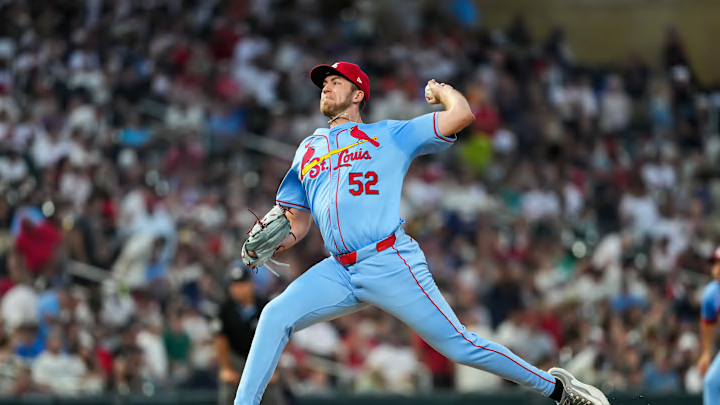4. Continue to build the bullpen with the same strategies they used this past offseason
Even if the Cardinals' bullpen was a mess right now, I'd be wanting to see Helsley start games next year. Why? Because relievers are volatile and starting pitching is more valuable. But I will say, it does help that I see a lot of interesting arms in the Cardinals' organization that could fill out this bullpen in Helsley's absence.
I did just point out how hit-or-miss bullpens can be, but I'd have to think that some combination of Ryan Fernandez, JoJo Romero, Matthew Liberatore, John King, and Keynan Middleton (assuming they pick up his option) will be effective next year. The Cardinals already saved $6 million for next year by cutting Giovanny Gallegos, so maybe they bring back Andrew Kittredge on a similar deal.
Okay, so there are six options right off the bat. I would then highly encourage the Cardinals to do what they did last offseason and bring in a bunch of low-cost, high-reward arms in trades, free agency, and the Rule 5 draft. Some will miss (like Nick Robertson and Riley O'Brien) but others will hit (like Ryan Fernandez and Andrew Kittredge). That tends to be the best way to build a bullpen.
Remember all of those starting pitching options I named earlier? Well, not all of them can start, so maybe names like Graceffo, Kloffenstein, or McGreevy find themselves in the bullpen. Maybe O'Brien, Kyle Leahy, or Chris Roycroft take steps forward. I could also totally see a Tink Hence or Cooper Hjerpe getting some work out of the bullpen in 2025 as well.
Here's my point - I think the Cardinals can build a really nice bullpen next year, even if they remove Helsley from the group and don't add significant salary to that portion of the roster. Also, imagine how much stress the Cardinals could take off their bullpen next year if they improve their rotation and lineup as well. It's kind of amazing how strong their relievers have been this year (and healthy for that matter) while being taxed as much as they have been.
I can't tell you which of those relievers will implode next year, but it is bound to happen. Some of them could take steps forward though too. But overall, I think the Cardinals have the tools internally, mixed with some low-cost dart throws this offseason, to have a strong bullpen again in 2025 and experiment with Helsley in the rotation.
